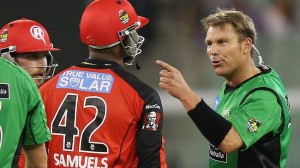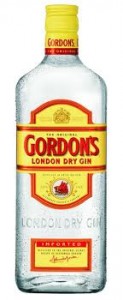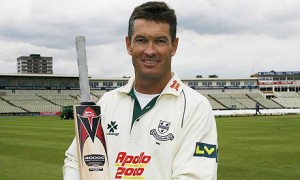
A gradual but inevitable descent into cricket-based loathing and bile.
The Great Australian Batting Crisis
Australian cricket is in crisis. It has no batsmen left. None. Zero. In fact, considering the ability or lack thereof of some of those who would lay claim to the title of batsman (yes, we mean you Mr Quiney), its batting stocks currently register in the negative. Such is the severity of the issue that it even warrants excessive capitalisation and punctuation, something like: The Great Australian Batting Crisis!!!
But are things really all that bad? Ex-players such as Ian Chappell and Shane Warne certainly think so, with both recently offering scathing critiques of the standard of Australian domestic cricket. Warne even went as far to suggest that the Sheffield Shield should be overhauled entirely. Sure, he was a little light on the details, but that’s okay; Warne is more of an ‘ideas’ man anyway. Presumably he dreams of a competition that allows players to exploit to the full their marketing potential, and that bans participants called Marlon Samuels.

This picture has no relevance to the article, we just really like it.
The single barometer both of these critics and commentators at large use to measure the Sheffield Shield’s success is runs scored. Or, more accurately, batting averages. And it is true that these currently make for very poor reading indeed. Allowing for a minimum of five innings, only eight batsmen averaged over 40 during the most recent season. Go back to the season before and there was a rather more encouraging 19 batsman who registered an average over that mark, however most barely scrapped over the line. According to Chappell, if you can’t average at least 40 in First-class cricket you should just give up and find something else to play instead (we would suggest Animal Crossing on the 3DS). That would make for some rather lopsided team selections in Australian cricket at the moment.
There is, however, another side to this story. However bad things look on the batting front, they look extremely encouraging in regards to Australia’s pace bowling depth. This time using ten wickets for the season as a minimum, eleven fast bowlers averaged under 22 runs per wicket last season. Go back the season before and ten bowlers managed that feat. Clearly if nobody is making many runs then someone must be taking a hell of a lot of wickets. Currently it’s open season for Aussie quicks and they’re not holding back on cashing in.

A bit like us when there is a special on Gordon’s.
What these numbers indicate is that the Australian domestic scene is currently one heavily skewed in favour of fast bowlers. And for anyone who has paid much attention to the Sheffield Shield of late that will come as no surprise. Nor will the cause of it. The points system in effect in the Shield gives six points for an outright win (irrespective of first innings scores), and only two points for a first innings lead in a drawn match. Clearly the emphasis is then on winning outright within four days. Generally, there is nothing wrong with that.
What this has led to in recent years however is the phenomenon of ‘result pitches’, essentially green tops that give the home team the best chance possible of taking 20 wickets in the match. Conversely the final of the competition, which is played over five days, is the opposite, with the home team declared the winner if the match is a draw. It’s no surprise, therefore, to see the home team prepare an absolute road, one intended to kill the match as a contest. Tasmania did exactly that in this season’s final, turning the match into a farce.
For those who only see the pitches prepared for Test cricket in Australia, that might sound a little far-fetched, but the sorts of decks prepared for domestic cricket bear little relation to those seen for international matches, and that discrepancy is, frankly, killing Australian domestic cricket. Right now the Sheffield Shield is a fast bowler’s paradise. That’s not to excuse the quality of contemporary Australian batsmen (a lot of them really are pretty shit. Especially Cameron White), but they’re not being judged by a fair standard. To say that an average of less than 40 is grounds for retiring is to ignore the conditions under which those runs are made. After two or three decades of brutalising domestic bowling attacks, Aussie batsmen have never had it this tough.
This is to say that there are some decent batsmen still kicking around, and the cupboard isn’t completely bare. Adam Voges is a far better batsman than his rubbish First Class average (just over 40) indicates. As is David Hussey. However these batsmen represent the last of a seemingly dying breed. To survive in current conditions batsmen are resorting to making hay while the sun shines, throwing the bat in the hope of compiling a quickfire innings before they are inevitably undone. Very few batsmen have the ability to compile a large innings anymore, it’s just a sea of Phil Hughes and Dave Warner clones. Which frankly would make anyone sick.

Save us Obi Wan Hick, you’re our only hope.
But the culprit is not the Big Bash, the IPL, or even violence in video games (although the wanton cruelty on display in Animal Crossing makes us fear for today’s youth). It’s the standard of pitches on display in the Sheffield Shield and, until it’s sorted out, Australian cricket will be remained marooned in its current position, sandwiched somewhere in the Test rankings between the might of New Zealand and Vanuatu. Of course, it may well just be that Australian batsman really are just uniformly utter shit (aside from Devereux and Captain Clarke), and they happen to be making Australian bowlers look good.
Based on the Ashes thus far, there is certainly little fortitude to build an innings. Even the half-decent knocks have looked frenetic rather than composed. With Australia being humbled and Simon Katich (to take one example) making chuffloads of runs for Lancashire, could the selectors look to add players to the squad who have pedigree in compiling runs? Admittedly there are already about 74 players in and around the squad, including Chris Rogers who was picked for that very reason and Shane Watson who has years (of mediocrity) under his belt, but if short-term results are the primary concern as opposed to allowing Usman Khawaja to try to learn how to bat under the intrusive bright lights of Ashes cricket, then it might be the sole option. No doubt it would be welcomed with unhinged laughter and lead to plenty of Dad’s Army jokes from the English media, but it might be the only tool available to prevent an era-defining and humiliating whitewash.

No Comments
Post a Comment